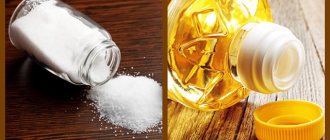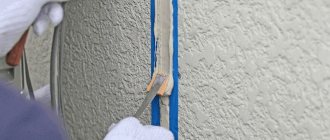Every person faces this problem from time to time. With all the variety of professional products produced by chemical companies, some types of contaminants are not so easy to wash off even with their help. What to do if they are not available, how to wash your hands of difficult-to-wash products? This article contains effective folk remedies that help get rid of various types of pollution at home.
How to remove dirt from nails
Most often, this question concerns gardeners who do not like to work with gloves. As a preventative measure, before working in the garden, you can scrape your nails with soap slightly moistened with water. After work, the soap can easily be washed off along with the dirt, keeping your nails clean.
There are several ways to get rid of dirt:
- Using hydrogen peroxide, which dissolves it well.
- For complex stains, prepare a solution of 2 cups of boiling water, 100 ml of hydrogen peroxide, 3 tsp. dishwashing detergent, 20 ml of ammonia (it enhances the effect of other components). Keep your hands in the slightly cooled solution for 10 minutes.
- Using lemon juice. It can be squeezed out and applied to stubborn dirt using a cotton swab, or cut the citrus in half and dip your nails directly inside, letting it sit for 10-15 minutes.
After the procedures, it is recommended to lubricate your hands with nourishing cream.
Precautionary measures
Many women wonder how to restore whiteness to their skin and nails after coming into the house from the garden. Before you go to the “plantation”, you need to protect the skin of your hands. To do this you need:
- apply cream to hands;
- choose the right gloves;
- treat your nails.
Apply a layer of nourishing cream to act as a protective barrier. The cream will prevent dirt and dust from being absorbed into the pores and will soften the skin. If you work in a flower bed or garden, your hands are exposed to sunlight. In addition, you endlessly wash your hands with water, washing away the dirt. Nourishing cream should be applied to the skin at least twice a day to protect it from drying out and the formation of age spots.
Be sure to wear gloves. We are not talking about thin latex products used in medicine. When working with plants and soil, they will immediately tear. It is not recommended to use cloth gloves because dirt will immediately get inside and get trapped under your nails. You can buy durable and comfortable gloves at a garden supply store. They are made of thick latex and have a nice cotton lining. As a result of work, your hands don’t sweat as much.
To easily restore shine and beauty to your nails after working in the garden, you will need a bar of soap. This original method was invented by resourceful girls. A slightly soaked bar of soap should be gently “scratched”. A little detergent should remain under your nails. After returning from the garden, all the dirt that has accumulated under your nails can be easily washed off with soap. Be careful: if you have a broken nail or a cut in the cuticle area, this procedure may be painful.
How to wash brilliant green from hands
If you don’t have time to wait until the brilliant green disappears from the skin, the following remedies will help you deal with it:
- Mix alcohol with lemon juice in a ratio of 5:1, wipe the stain until it disappears.
- An aqueous solution of baking soda. Dilute baking soda with warm water to the consistency of liquid porridge. Rub the resulting mixture into the skin with rotational movements.
- Rub hydrogen peroxide into the stain for 40 seconds.
- Products with chlorine. Moisten the stain on the skin with a solution (for example, “White”), leave for 15 seconds, and rinse with water.
You can try to remove the brilliant green with toothpaste (not gel-type) or acetone (nail polish remover).
How to wash iodine from hands
This substance eats into the skin very quickly. Help to quickly wash off iodine:
- Vegetable oil. After rubbing the oil into the stain, wait 5 minutes and wash your hands with soap.
- Alcohol-containing products (alcohol tinctures, lotions, eau de toilette, vodka). Wipe the stain until it disappears, rinse your hands with water.
- A paste of baking soda and warm water. Rub the mixture onto the stain and wash it off with water after 2–3 minutes.
- Fat cream. Allow the product to absorb for a few minutes, then wash your hands with soap and hot water.
Iodine is also afraid of hydrogen peroxide, lemon juice, and acetone.
Tomato
A good natural way to remove stubborn dark stains is to cut a tomato in half and rub it thoroughly on your hands. The juicy pulp should be absorbed into the skin. After a while, rinse your hands with warm water.
If necessary, the procedure must be repeated.
Tomato juice tightens enlarged pores. To enhance the cleansing effect, you can squeeze it into a bowl and add bran or ground oatmeal.
How to remove hair dye from hands
The process of hair coloring today is popular not only among women, but also among men. Hair dye is quickly absorbed into the skin and does not look very attractive. To help remove it:
- Vegetable oil (paint can be easily removed using a cotton swab dipped in it). If the oil is heavily soiled, leave it for several hours, then wash it off with warm water and soap.
- Cosmetic soap. Lather a cotton swab and rub the stain; remove the washed-out paint with a dry cotton swab.
- Baking soda, lemon, toothpaste (use as for removing other stains).
- Kefir. Apply a cloth soaked in it to the stain for 15–20 minutes, rinse with warm water.
To remove hair dye stains, cut a potato and rub it on the stained skin.
Industrial cleaners and pastes
In car stores you can easily find many solutions that deal with both fuel oil and oil, but also fungal contaminants formed as a result of a chemical reaction. They do not cause allergies or irritation, completely protecting the consumer’s hands from harmful effects. There are quite a few cleaning products on the market, but the following options remain the most effective, with multiple positive reviews:
- Strong Geco;
- Berener;
- Wurth Profi.
How to wash potassium permanganate from hands
Another substance that leaves dark spots on the skin. The list of means to quickly wash your hands of potassium permanganate is quite simple:
- A mixture of hydrogen peroxide and 9% vinegar (1:1). Rub the stain with a swab soaked in the mixture until it disappears.
- Alcohol-containing products (vodka, lotion, cologne).
- Citric (lemon juice) or ascorbic acid.
- Hydrogen peroxide.
For sensitive skin, you can use grated laundry soap mixed with baking soda (1:1) and a small amount of warm water. The mixture is applied to the stain and, after drying, washed off with warm water.
Sorrel
According to the observation of experienced gardeners, stubborn dirt after working in the beds comes off remarkably well from sorrel juice. Several leaves of fresh herbs need to be slightly kneaded and rubbed with light pressure on your hands. Treat the area between your fingers especially carefully.
Biologically active substances contained in oxalic acid have a beneficial effect on the skin. Sorrel tightens wrinkles on the hands and helps cells resist negative environmental influences.
How to remove paint from hands
From time to time you have to touch up something, so many people face the problem of paint stains. In this case, a soap or alcohol solution will only cope with water-based paints and varnishes. The best products for removing oil paint stains are:
- Animal fat (lard). Rub lard onto the contaminated area; when the paint has dissolved, wipe off with a paper napkin.
- Vegetable or butter. Rub the stain and wipe with a soft cloth.
- 1 tbsp. l. salt + 2 tbsp. l. vinegar + 1 tbsp. l. ammonia. Wipe the stain with the mixture until it disappears.
Oil-based paint can also be removed with gasoline. The method is not suitable for people with sensitive skin, as it causes severe irritation.
How to wash foam from hands
If professional remedies are not available, try using available home remedies:
- Saline solution. 1 tbsp. l. dissolve salts Place your hands in the prepared solution for 10 minutes. Remove the remains with a hard sponge.
- Rub your hands with the thick cream and remove the foam with a pumice stone. Thanks to the cream, the skin will remain intact.
- Vegetable oil. Heat until warm, rub into the skin, leave for 15 minutes, remove with a hard sponge, wash your hands thoroughly.
Medical alcohol, gasoline, acetone or nail polish remover will help remove residual foam.
Red elderberry
Towards the end of the season, ripe clusters can be found on the branches of red elderberry in the garden. Their juice is good at washing away traces left after sorting colored berries, as well as other garden work.
Rub the fruit into your palms and then wash your hands with cool water. This natural soap is capable of dissolving plant resins: they appear on the skin after interaction with coniferous crops or cherry growths.
How to wash glue off your hands
Regular office glue can be easily washed off with soapy water. PVA glue can also be easily removed with water. To make removal easier:
- acetone (nail polish remover);
- ammonia or medical alcohol;
- vinegar.
To remove rubber or silicone glue, if it has not yet turned into a film, you just need to wash your hands with soap. Silicone can be easily removed by rubbing your fingers together. The resulting pellets are easily separated from the skin.
Use of solvents in scrubbing hands and nails
Acetone can only be used by men with rough skin. A thick layer will not lead to damage similar to the thin surface of women's handles. For the fair sex, it is better to give preference to an alternative, but safer option - nail polish remover. The solution comes into contact with the skin using cotton wool or a cotton pad, removing even the deepest dirt.
How about by hand
Cyanoacrylate-based glue quickly adheres to the skin of the hands, forming a crust, the removal of which is accompanied by painful sensations. You can remove it in several ways:
- Antiseptic "Dimexide". A harmless pharmaceutical product that removes adhesive residues of minimal thickness.
- Vegetable oil . If you dip your hands in oil or generously lubricate them, the crust will separate completely from the glue. When finished, wash off the oil with soap.
- Petrolatum. Vaseline applied to the skin for half an hour will soften the glue, after which it can be easily removed with a pumice stone.
- Salt. Sprinkle salt on hands steamed in hot water and rub into skin until foam appears. After this, the glue can be easily removed with a pumice stone or brush.
The last method will not work if the skin is damaged (scratches, irritation). You can use gasoline as a solvent, apply it to your hands, and after 2 minutes wash off with soap and water using a brush or pumice stone.
Attention! You can use dimexide only if you do not have an allergic reaction to it!
How to remove sealant from hands
Acrylic adhesives, called sealants or “liquid nails,” are easily washed off with water in their raw form. While working, use a wet soft cloth to remove the sealant.
Dried glue residues are removed mechanically using a brush or pumice stone. You can do without special products; the residues will go away on their own within 2-3 days. Acrylic compounds are safe when dried.
How to wash resin from hands
Most often the problem concerns wood or epoxy resin. They are removed in different ways. Epoxy resin can be handled by:
- Baby cream. Rub into the stain and wipe with a stiff brush. If necessary, repeat the procedure.
- Coca-Cola, Fanta, Sprite. Dissolve 1 tbsp in 1 liter of drink. l. soda, dip your hands in the drink for 10 minutes, rinse with water, lubricate with cream.
- Soda. Make a paste from water and soda, apply to your hands, remove with a stiff brush, wash your hands.
- The resin will dissolve if a cotton swab soaked in nail polish remover is applied to it. After a few seconds, rinse off with a brush or pumice stone.
Wood resin is washed off with gasoline or acetone. If they are absent, try rubbing vegetable oil into the skin for half an hour.
Take care
Here are some interesting recipes using ingredients that you will probably find in your dacha:
Dig up a couple of potatoes, peel them and make a paste out of them. If you have milk in the refrigerator, add it to this mixture. Lubricate your hands, put on gloves and leave for 3 hours. It is very useful to do this mask before bed.
Take a piece of bread and soak it in water. Apply the resulting mixture to your hands for half an hour. It is better to do this mask every day.
Pick a couple of strawberries from the garden beds. Grind them with rich sour cream or cottage cheese and apply to your hands for 20-25 minutes. Do this mask every other day.
Grate the zucchini and mix it with vegetable oil. Spread the mixture on your hands. Wash it off after half an hour.
How to wash fuel oil from your hands
Gasoline, diesel fuel or dishwashing detergent can quickly deal with such contamination. Fuel oil can be easily removed with abrasive materials (sand, soda ash). Oily stains can be removed using ammonia or vegetable oil.
To remove fuel oil, you can prepare a special mixture: 2 tbsp. l. starch + 2 tbsp. l. baking soda + 1 tsp. ammonia + 1 tsp. turpentine. Apply the mixture to your hands and leave for 2-3 minutes. After any procedure, hands should be washed with soap.
How to wash your hands of oil
Food and machine oils are removed by washing your hands with soap or dish detergent in hot water. Machine oil that is more difficult to remove can be washed off;
- washing powder (not suitable for people with allergies);
- gasoline (when finished, wash it off with laundry soap);
- an aqueous solution of car shampoo (1/2 cap in 5 liters of water, put your hands in it and hold it for 5 minutes, rinse with soap and water).
Attention! All of the listed products are not recommended for use in the presence of any skin damage.
How to remove odor from hands
The usual available means are well suited for this:
- apple cider vinegar (1 tbsp per glass of water);
- a mixture of vodka and ammonia;
- a mixture of hydrogen peroxide and green tea.
The peel of an orange or lemon will help remove the smell. You should rub the skin well with it, and it will not only remove the smell, but also give the skin a pleasant aroma.
Folk remedies and tips on how to wash your hands at home effectively help get rid of various contaminants. Most of them are absolutely safe for both humans and the environment. And what is important, they are incomparably cheaper than ready-made professional products.
If you know other proven ways to get rid of dirt or odors on your hands, write to us in the comments!
Why is it difficult to remove dirt after picking mushrooms?
Not in all cases, dark spots and dirt remain on the hands after a quiet hunt. The problem only arises when quietly hunting for slimy mushrooms that have an “oily” cap. “Snot” butterflies are one of the most common mushroom families, whose cap is covered with a protective layer in the form of a film wrapped in transparent mucus. The value of such a phenomenon remains two advantages: enriching the pulp with iron and giving a glossy coating that makes the family merge with fallen leaves.
When the skin comes into contact with the mucous cap, a chemical reaction occurs that turns the hands a dark shade. After collecting and cleaning, the most often affected are the fingers and the upper part of the palm, which comes into contact with the mushrooms more often than the lower surface.
The spots may stain the hands unevenly in patches or completely. As the experience of lovers of quiet hunting shows, delicate female skin that does not have a rough layer suffers more often.











